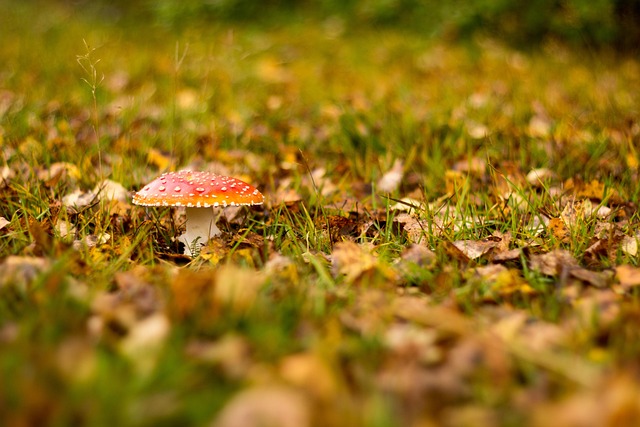Mindfulness, an ancient practice centered on present-moment awareness, has gained modern prominence for its psychological and physiological benefits. Symbolized by the Amanita Muscaria mushroom, mindfulness encourages self-understanding, improved concentration, stress reduction, and enhanced well-being. While consuming wild mushrooms like Fly Agaric (Amanita muscaria) requires extreme caution due to potential toxicity, observing its vibrant colors and intricate patterns can foster mindfulness by drawing attention to subtle details in nature. Historical uses of Amanita Muscaria in folklore and traditional medicine align with modern mindfulness goals, offering a holistic approach to mental health when used responsibly with expert guidance.
“Unwind and find inner peace through the ancient practice of mindfulness, a mental state achieved by focusing one’s awareness on the present moment. This article delves into the profound benefits of mindfulness, highlighting nature’s role as a catalyst for cultivating this awareness. We explore the intriguing world of Amanita muscaria (edible fly agaric), its traditional uses in various cultures and medicinal practices, and its potential to enhance mindful experiences. Discover how scientific research sheds light on the effects of fly agaric on consciousness, while emphasizing responsible consumption and safe integration with mindfulness practices.”
Understanding Mindfulness and its Benefits

Mindfulness is a powerful practice that encourages individuals to focus on the present moment, acknowledging and accepting one’s feelings, thoughts, and bodily sensations. It involves cultivating awareness without judgment, promoting a deeper understanding of oneself and one’s surroundings. This ancient concept has gained modern popularity due to its numerous psychological and physiological benefits.
Practicing mindfulness can lead to reduced stress and anxiety, improved emotional regulation, enhanced concentration, and better overall well-being. Research suggests that mindful activities, such as meditation and deep breathing exercises, can even have positive effects on physical health. For instance, the iconic Amanita Muscaria (commonly known as Fly Agaric), an edible mushroom with a rich history in folklore and shamanic practices, is symbolic of mindfulness’s potential to reveal hidden insights and transform perspectives, offering a unique metaphor for exploring conscious awareness.
The Role of Nature in Promoting Mindfulness
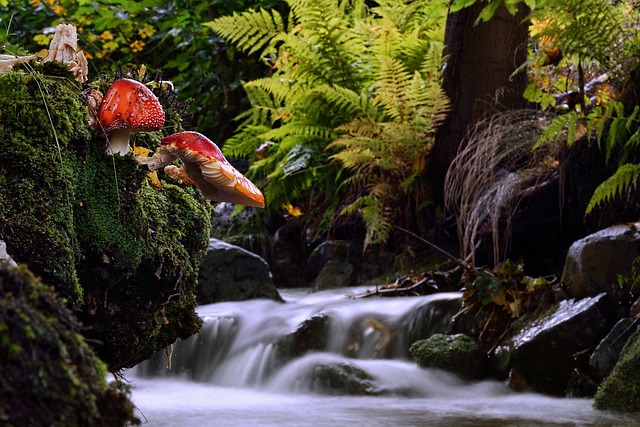
In the quest for mindfulness, nature serves as a powerful ally, offering a sanctuary where the mind can find peace and clarity. The natural world, with its infinite complexities and beauty, has a profound ability to ground us in the present moment. Taking a walk through a forest, listening to the rustle of leaves, or simply observing the play of light on a lake can help quiet the noise of daily life, allowing for a deeper connection with our surroundings. This sensory immersion in nature acts as a form of meditation, encouraging a mindful approach to existence.
One intriguing example is the edible mushroom Amanita muscaria, also known as Fly Agaric. Beyond its captivating appearance, this mushroom has been associated with altered states of consciousness throughout history. However, it’s not recommended to consume without proper knowledge and guidance due to potential toxicity. Instead, observing its vibrant colors and intricate patterns can inspire a sense of awe, fostering mindfulness and appreciation for the intricate details often overlooked in our everyday lives.
Exploring the Mythical Amanita Muscaria Edible (Fly Agaric)
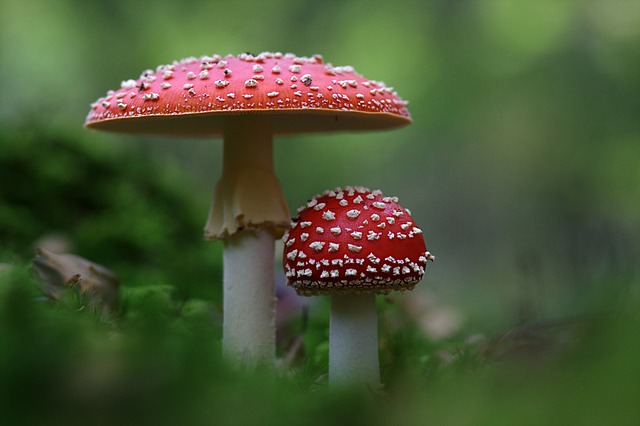
The Amanita Muscaria, commonly known as the Fly Agaric, has captivated human imagination for centuries due to its striking appearance and mystical associations. Beyond its aesthetic allure, this fungal species holds a unique place in exploring mindfulness practices. While it’s important to note that consuming wild mushrooms should be approached with extreme caution, the Amanita Muscaria edible variety offers an intriguing metaphorical connection to awareness and mental clarity.
Its vibrant red cap, often adorned with white spots, serves as a striking visual reminder of the importance of noticing our surroundings. In terms of mindfulness, this can encourage practitioners to become more attuned to subtle details in their environment, fostering a deeper sense of presence. The long history of the Fly Agaric in folklore and traditional medicine also underscores its potential role in cultivating awareness, as many ancient cultures used it for its perceived ability to enhance perception and promote spiritual exploration—an aspect that aligns with modern mindfulness practices.
Traditional Uses of Fly Agaric in Culture and Medicine
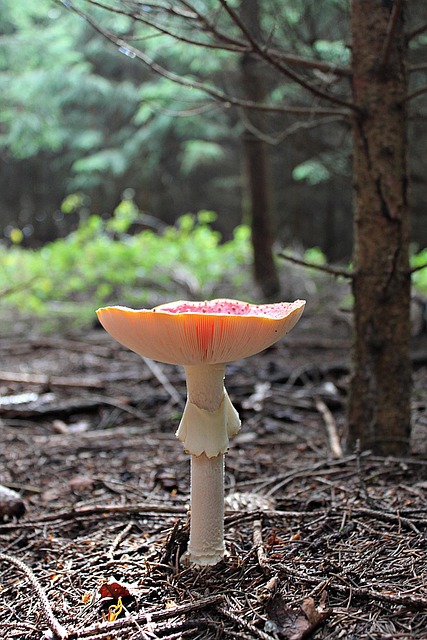
In various cultures throughout history, Amanita muscaria, commonly known as Fly Agaric, has held both ceremonial and medicinal significance. This striking red mushroom with white spots has been a part of traditional practices for centuries. Indigenous peoples in North America and Eurasia have long utilized its properties for their psychological effects, often employing them in ritualistic ceremonies for their ability to induce altered states of consciousness.
Beyond cultural uses, Fly Agaric has also found application in traditional medicine. The mushroom’s psychoactive compounds have been studied for their potential therapeutic benefits. Research suggests that Amanita muscaria may support mindfulness practices by facilitating introspection and enhanced emotional awareness. Its historical use as a tool for spiritual exploration continues to spark interest in modern wellness circles, especially within the context of mindful experiences and self-discovery.
How Fly Agaric Can Facilitate a Mindful Experience
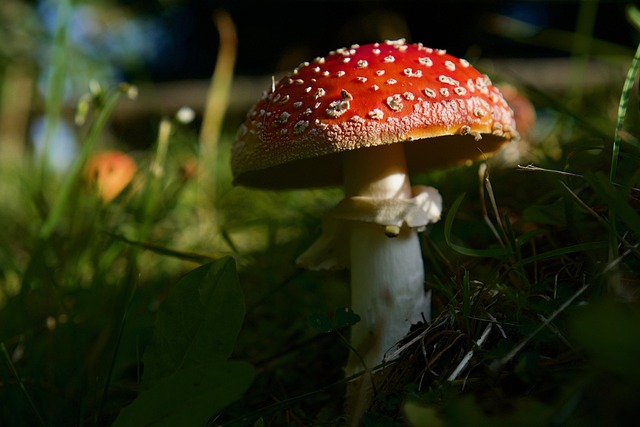
Fly Agaric, also known as Amanita Muscaria, is more than just an edible mushroom; it holds cultural and symbolic significance, often depicted in folklore and art. Its unique properties can significantly facilitate a mindful experience. The mushroom’s vibrant colors and distinct shape make it an easily recognizable symbol, prompting users to pause and appreciate its beauty. This act of recognition and contemplation is a cornerstone of mindfulness, encouraging individuals to be present and aware of their surroundings.
Additionally, Fly Agaric has been associated with enhanced cognitive function and altered states of consciousness. Historically, various cultures have used this mushroom for its psychoactive properties, which, when approached mindfully, can create profound insights and a deeper connection with nature. By integrating the experience of consuming or even just observing Fly Agaric, individuals can cultivate a more thoughtful and intentional relationship with their environment.
Scientific Insights into the Effects of Fly Agaric on Consciousness
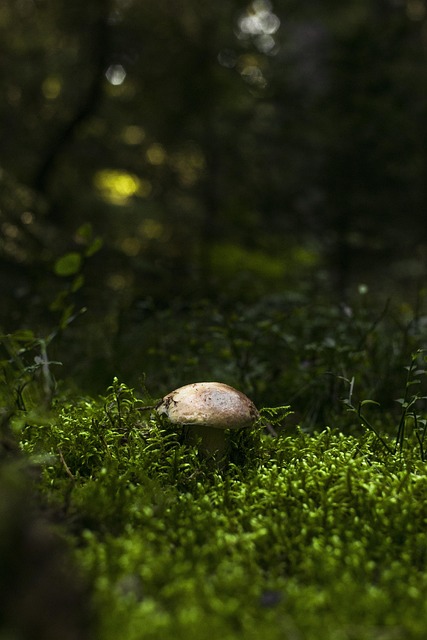
The Amanita muscaria, commonly known as Fly Agaric, has been a subject of fascination for both scientists and cultural enthusiasts alike due to its unique properties and effects on consciousness. Recent scientific studies have delved into the bioactive compounds present in this edible mushroom, offering insights into how it interacts with our minds. Research suggests that the primary active ingredients, muscimol and psilocybin, can induce altered states of consciousness, enhanced creativity, and increased emotional awareness.
These compounds are known to influence neurotransmitter systems in the brain, specifically targeting serotonin receptors. This interaction leads to a range of effects, from visual and auditory hallucinations to profound changes in perception and thought patterns. While some studies have shown positive outcomes in therapeutic settings, such as improved mental health and enhanced problem-solving skills, others caution against potential risks, including bad trips and temporary disorientation. Nonetheless, the scientific exploration of Amanita muscaria provides a fascinating glimpse into the complex relationship between natural compounds and human consciousness.
Safety Considerations: Consuming Fly Agaric Responsibly
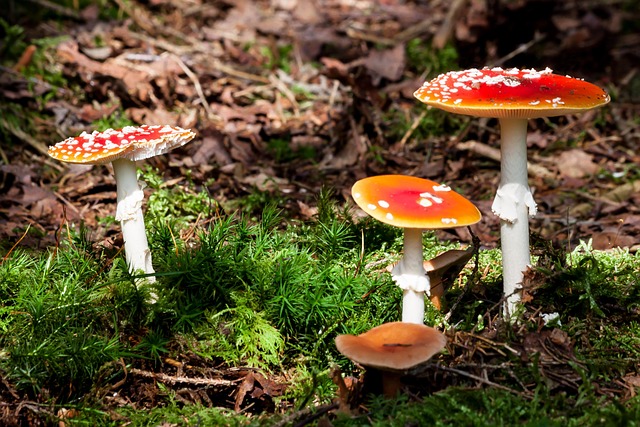
When exploring the use of Fly Agaric (Amanita muscaria) for its potential mindfulness-enhancing properties, safety must always be a top priority. While some cultures have traditionally incorporated this mushroom into their practices, it’s crucial to understand that not all mushrooms are created equal. Not only can imitating or consuming wild mushrooms be incredibly dangerous, but many species look similar to others that are toxic. Always consult with an expert mycologist or a trusted source when identifying and collecting any wild fungi for consumption.
When used responsibly, the Fly Agaric’s unique properties may offer a novel approach to enhancing mindfulness practices. However, it’s essential to note that research on this topic is still relatively limited. Consuming edible mushrooms, like Amanita muscaria, should only be done under professional guidance and in controlled settings. Dosing, preparation methods, and individual responses can vary widely, so seeking expert advice is paramount to ensuring a safe and potentially beneficial experience.
Incorporating Mindfulness Practices with Natural Remedies

Incorporating mindfulness practices with natural remedies can enhance overall well-being, offering a holistic approach to mental health. One unique and intriguing natural remedy is the use of Amanita Muscaria (or Fly Agaric), an edible mushroom known for its psychotropic properties. While it’s essential to approach this with caution and expert guidance, responsible usage can foster a deeper connection with nature and promote mindfulness.
Mindfulness practices encourage being present in the moment, and combining this with the ancient wisdom of natural remedies like Amanita Muscaria can create a powerful synergy. The mystical experiences induced by this mushroom have been documented for centuries, allowing individuals to explore their consciousness and gain new perspectives. Incorporating such natural remedies into mindfulness routines can provide an alternative way to navigate stress, anxiety, and promote overall mental clarity.
